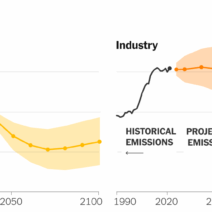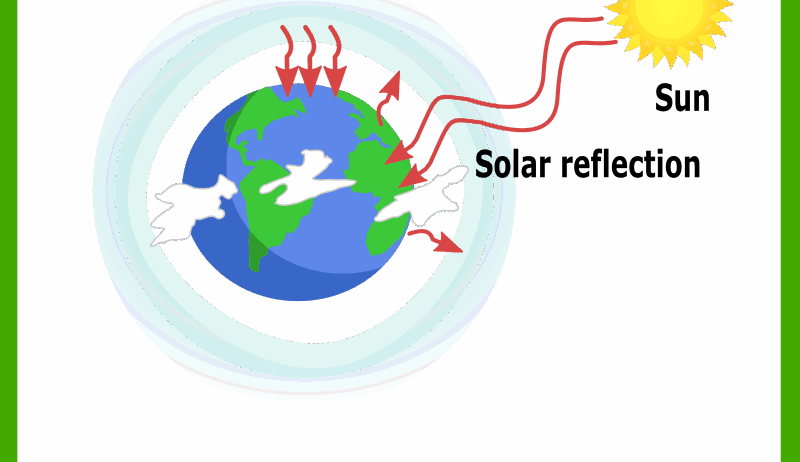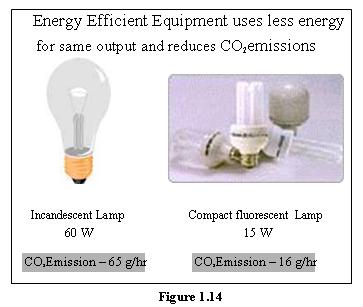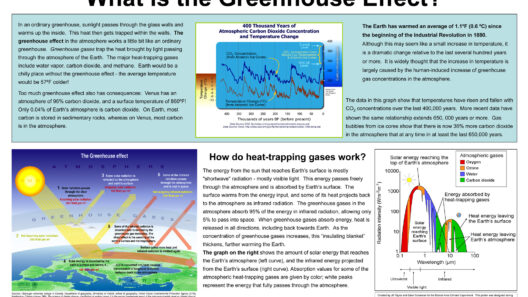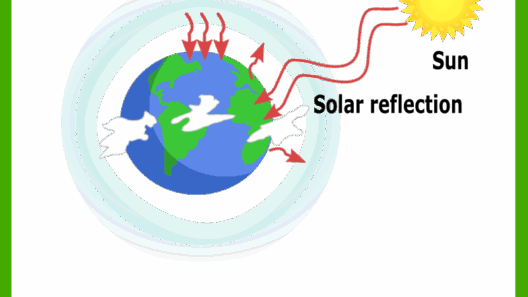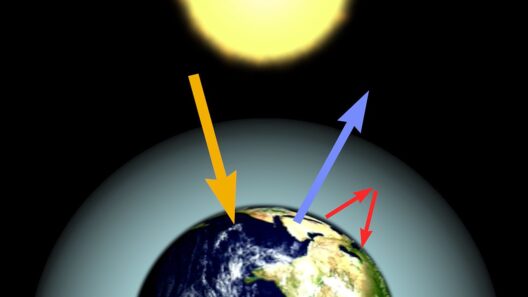The greenhouse effect is a critical concept in understanding climate change and the health of our planet. As the world grapples with environmental issues, comprehending the greenhouse effect becomes paramount. This article aims to dissect the phenomenon clearly and concisely, ensuring readers grasp the essence of how greenhouse gases influence our atmosphere and climate.
At its core, the greenhouse effect refers to the natural process by which certain gases in Earth’s atmosphere trap heat, thereby warming the planet. This effect is fundamental to maintaining temperatures conducive to life. However, human activities have significantly intensified this process, leading to dire implications for ecosystems and weather patterns globally.
To clarify this intriguing phenomenon, let’s explore its key components, mechanisms, and consequences. By simplifying complex scientific ideas, one can appreciate both the nuances of the greenhouse effect and its far-reaching impacts.
Understanding the Mechanism of the Greenhouse Effect
A fundamental aspect of the greenhouse effect involves solar radiation. The sun emits energy in the form of sunlight, which travels to Earth. Upon reaching our planet, some of this energy is absorbed by the surface, heating the land, water, and atmosphere. Subsequently, the Earth emits this energy back into space as infrared radiation.
However, not all of this outgoing radiation escapes successfully. Certain gases in the atmosphere — known as greenhouse gases — absorb and re-radiate the infrared radiation back toward the Earth. The primary greenhouse gases include carbon dioxide (CO2), methane (CH4), and nitrous oxide (N2O). These gases function like a thermal blanket, preventing heat from escaping too freely. This natural insulation helps maintain a habitable climate.
Key Greenhouse Gases and Their Sources
Identifying the various greenhouse gases and their origins offers insight into their impact on the climate. Each gas has distinct properties and contributes differently to global warming.
Carbon dioxide is perhaps the most well-known greenhouse gas. Human activities, particularly burning fossil fuels for energy and deforestation, have led to sharp increases in atmospheric CO2 levels. This gas can remain in the atmosphere for centuries, making its cumulative impact significant.
Methane is another potent greenhouse gas, with a global warming potential significantly higher than that of CO2 over a shorter time frame. Methane predominantly originates from agriculture, landfills, and the natural gas industry. The extraction and transport of natural gas can lead to substantial methane emissions, further amplifying the greenhouse effect.
Nitrous oxide, while less prevalent, is particularly concerning due to its efficiency as a heat trapper. This gas is often released through agricultural practices, such as the use of synthetic fertilizers, and is also produced during fossil fuel combustion.
The Role of Human Activity in Amplifying the Greenhouse Effect
The natural greenhouse effect is essential for life on Earth. However, human-induced activities have significantly intensified this effect, leading to climate change. The industrial revolution marked a pivotal point, as greenhouse gas emissions surged due to increased use of fossil fuels, agriculture, and urbanization.
Deforestation plays a formidable role in exacerbating the greenhouse effect. Trees absorb carbon dioxide; thus, when forests are cut down, not only is CO2 absorption diminished, but the carbon stored in these trees is released back into the atmosphere. Consequently, this accelerates global warming and disrupts local ecosystems.
In addition to emissions from burning fuels and deforestation, industrial activities contribute considerably to greenhouse gas concentrations. Manufacturing processes, chemical production, and waste management all release greenhouse gases, compounding the challenges posed by climate change.
The Impacts of the Greenhouse Effect on Climate and Ecosystems
The repercussions of an intensified greenhouse effect are manifold, affecting climate systems and ecological balance on a global scale. Rising global temperatures lead to numerous adverse weather patterns, notably increased frequency and intensity of storms, flooding, and droughts. Regions once thought impervious to such extremes are now experiencing unprecedented weather phenomena.
Moreover, the warming climate has far-reaching implications for biodiversity. As temperatures rise, many species face challenges in adapting to their new environments, leading to shifts in ecosystems and loss of habitat. This disruption can result in decreased biodiversity, adversely impacting food webs and resilience within ecosystems.
Melting polar ice and rising sea levels are other critical consequences of the greenhouse effect. Glaciers and polar ice caps are essential for regulating global temperatures and preserving marine ecosystems. As these features diminish, sea levels rise, threatening coastal communities and exacerbating erosion, salinization of freshwater sources, and habitat loss.
Mitigating the Greenhouse Effect: Actions Toward Sustainability
Addressing the greenhouse effect requires both individual and systemic changes. Transitioning to renewable energy sources, such as solar, wind, and hydropower, is vital to decreasing reliance on fossil fuels, thereby reducing carbon emissions. Furthermore, efforts to enhance energy efficiency can significantly lower energy consumption and its associated emissions.
Reforestation projects offer a promising means to sequester carbon dioxide, alongside promoting sustainable agricultural practices to minimize methane and nitrous oxide emissions. Adopting lifestyle changes, such as reducing waste, consuming less, and supporting sustainable products, can collectively contribute to mitigating the greenhouse effect.
In summary, understanding the greenhouse effect in straightforward terms enables individuals to comprehend its vital role in climate dynamics. By grasping the cause-and-effect relationships between greenhouse gases, human activity, and climate change, one can better appreciate the urgent need for collective action in safeguarding our planet’s future.

